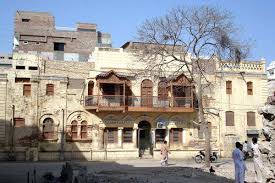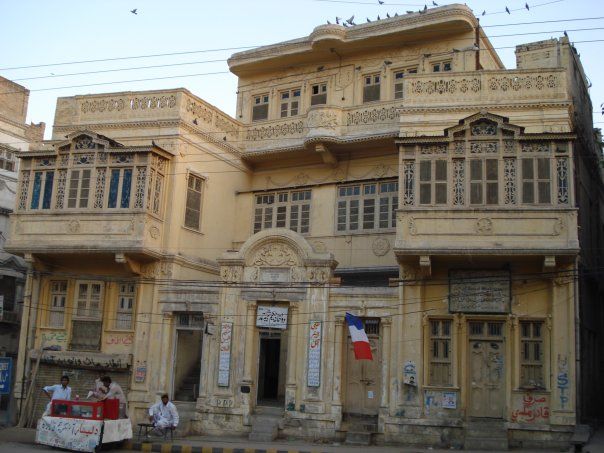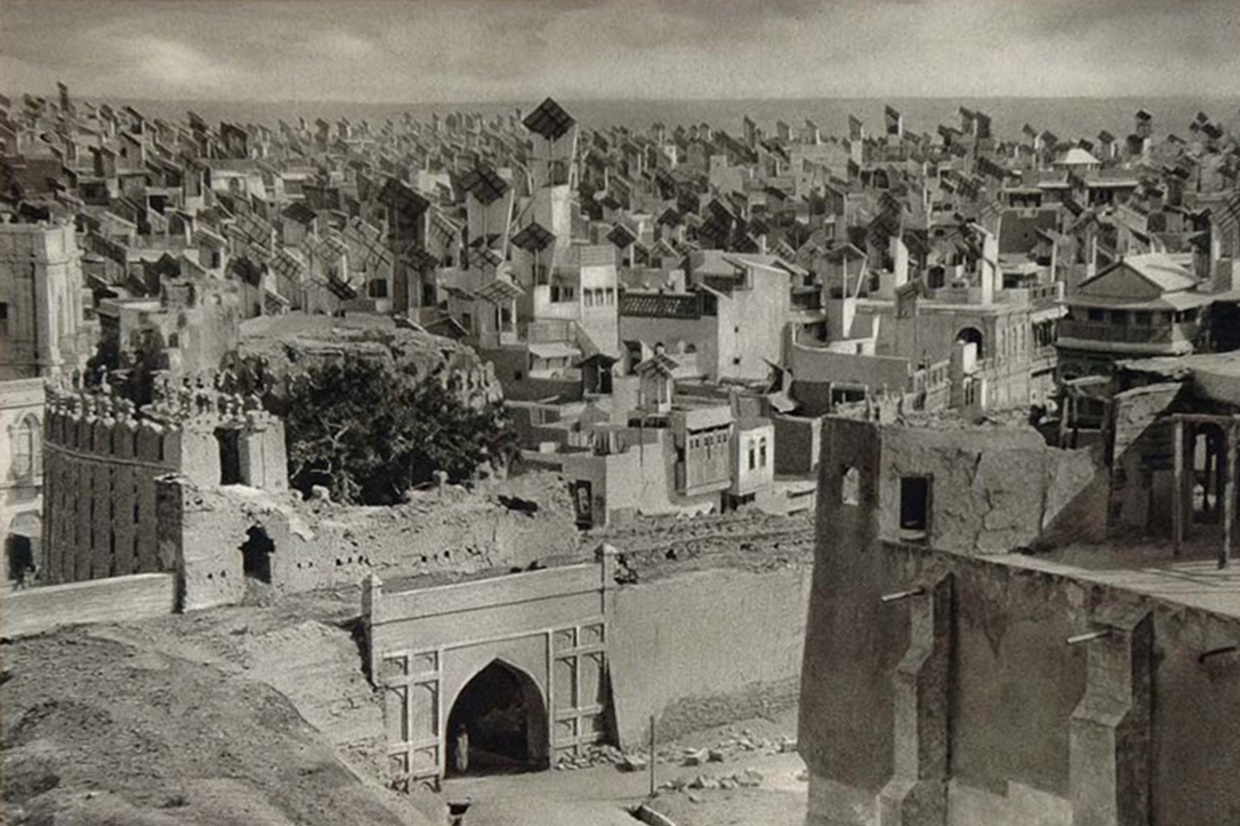
Uttamchandanis left their flourishing business, money, jewelry and palatial house behind and took steamer from Karachi to Bombay. They become part of refugees- penniless and homeless.
Hindu Sindhis in urban areas of Sindh mainly consisted of Amils (administrators) and Bhaibands (businessmen). The Bhaibands always took active part in trade, they decided to export handicrafts of Sindh to other part of India and World. They came to be called as Sindhworkis. The Sindhworkies was a closed group of businessmen- mostly Bhaibands and few Amils. Their prosperity due to trading resulted in Hindus buying large properties in Hyderabad and Karachi.
Uttamchandanis had palatial house at Hirabad area of Hyderabad. As Sindhworkies most male members of family used to stay abroad either at Aden (which till 1937 was part of India) or Gibraltar. After spending around 2-3 years abroad ( where they used to sell handicrafts to Gulf and European market), they used to come back to their house in Hirabad, stay there for few months and then back to Aden or Gibraltar.
Uttamchandanis had their head office at Shahi Bazar, a big market that stretched from Pakka Qilla to Navalrai Clock Tower. The present generation of Uttamchandanis consisted of 5 brothers, their widowed mother (Ammi), their wives and children. Ammi ruled house with iron hand, the hawk eyed lady missed nothing. The daughters in law, children and servants of house were supervised by Ammi sitting on cot kept in large court yard of house.
Youngest son Kewalram was not good in business, he wanted to study in some good college in Bombay and not in Dayaram Gidumal National College where he was presently studying. He was influenced by Marxism and was keen to join Communist Party.
He was married to an educated Amil girl, Savitri Advani. Bhaiband marrying Amil was rare in sense, Amil, who considered education important, were hierarchically superior to Bhaibands for whom business was everything. At the time of their marriage, Kewalram was 19 years old while Savitri was 17 to a years old ( considered too old by Ammi, ideally girls were married as soon as they reach puberty i.e. age of 12-13 years. )

Within year they had a girl child whom they called Saraswati (goddess of learning). After birth of Saraswati, Ammi told Kewalchand to leave college and help his brothers in business. But he was never good in business and lacked capacity to do hard work needed for selling wares , besides it meant staying at Aden or Gibraltar for 3 years. It was hard life compared to comfortable life in Hyderabad. He was slowing losing his status within family. He felt bad when cousins of Saraswati got larger share of cake than her, which they brought from Bombay Bakery in Saddar area or wives of his brothers refused to take him and Savitri to Dialdas Club.
Ammi was harsh with Savitri, in distribution of work, hardest part was given to her, Savitri being Amil and educated made it even worse. Ammi believed that education for women was waste of time and money. Their primary job was to serve family and reproduce and this did not require any education.
Savitri was frustrated with her life, in a hot afternoon, the cool breeze from windcatchers made her think about what she was going to do in life. Windcatchers are something unique to Hyderabad, which helped them to trap cool wind during hot day. She became part of Om Mandali started by her distant relative Lekhraj Kripalani, Satsang of Om Mandali had influence on her. Much to Kewalram’s chagrin, she also took vow of celibacy and refused to budge from it. Kewalram cursed Lekhraj for this.
Kewalram now decided to spend more time in politics. The politics of Sindh after separation from Bombay was dominated by politicians alike Allah Bux Soomro, GM Syed and Mohammad Ayub Khuhro. These politicians though disliked Jinnah, supported Muslim League. With their help Muslim League was able to increase their influence and get 27 out of 60 seats in election of 1946, a significant improvement over their performance in elections of 1937. In same election Congress under Maulana Azad won 18 seats. Earlier in 1943, under leadership of G M Syed, Sindh assembly passed resolution in favour of Pakistan.
In August 1947, Pakistan became reality, province of Sindh became part of Pakistan- unlike Punjab and Bengal it was not partitioned, whole of Sindh went to Pakistan. Though Jinnah never mentioned it, Pakistan- land of pure- was to be a Islamic country, which vowed to treat its minorities well.

Post partition, Sikhs and Hindus of Pakistan moved to India, while Muslims of India moved to their dream destination – Pakistan. They compared themselves with Muhajirs who went from Mecca to Medina and expected Muslims of Pakistan to behave like Ansars.
But things in Sindh were different, though Muslims of Sindh especially landlords and Pirs played important role in formation of Pakistan, post formation they were not keen either to settle Muhajirs in Sindh or ask Hindus to leave. They preferred Sindhi Hindus to Muhajirs. But riots in Sindh started by Muhajirs (they were keen to drive away Hindus and take their property) made Hindus uneasy, they decided to leave Pakistan.
Uttamchandanis left their flourishing business, money, jewelry and palatial house behind and took steamer from Karachi to Bombay.
Once in Bombay, they become part of refugees- penniless and homeless.
But Uttamchandanis had good network, so managed to find a flat in Colaba region of Bombay. Kewalram decided not to shift to the flat but try his luck elsewhere, Savitri supported his decision. They stayed back in refugee camp. They had option to shift to place bit far from Bombay called Kalyan, but they decided to shift to Nagpur which was capital of Central Provinces and Berar. One of his communist friend managed to find them a small house in Mahal area of Nagpur. His friend also managed to get Kewalram job in cloth shop in Itwari region and Savitri became teacher in school started for Sindhi refugees.
_________________
Courtesy: Vivify Change Catalyst
(Excerpts from an article ‘Partition of India- Part I- The Bhaibands of Sindh’.